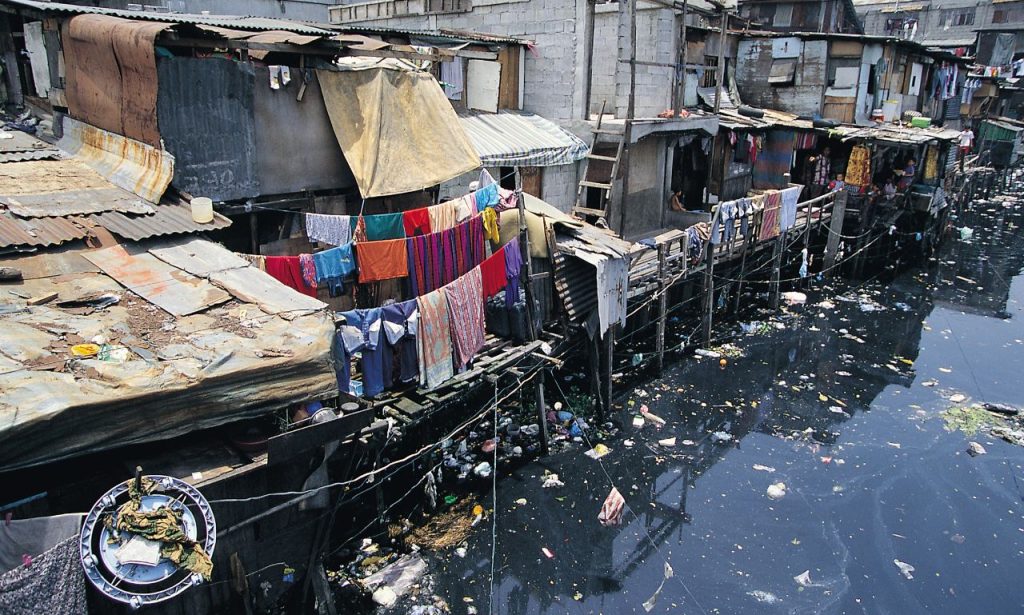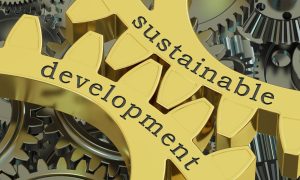Poverty continues to plague millions of Americans despite decades of programs designed to combat it. You might wonder why we haven’t solved this problem yet. I’ve asked myself the same question many times. In this article, I’ll break down the key reasons poverty persists and what might work to reduce it. We’ll examine how poverty is defined, historical context, structural issues, government programs, societal perceptions, the poverty trap, and how other countries approach this challenge. By the end, you’ll understand why poverty is so stubborn and what changes could make a real difference.
Defining Poverty in the U.S.
Let’s get honest about what poverty means in America. The federal government uses income thresholds that vary by family size to determine who’s poor. A family of four earning less than $30,000 annually is considered to be living in poverty. These numbers don’t tell the whole story, though.
Someone experiencing poverty often faces multiple challenges simultaneously. They’re not just short on cash. Many struggle with housing insecurity, food insufficiency, and limited access to healthcare. The official poverty measure doesn’t account for regional cost differences either. Living on $30,000 in rural Mississippi is very different from trying to survive on that same amount in San Francisco.
Material poverty extends beyond what you can buy. It affects your life options, stress levels, and even your mental bandwidth for making good decisions. Poverty isn’t simply about income—it’s about constrained choices and limited opportunities that create a cascade of challenges.
Historical Perspective

Economic shifts and policy decisions have evolved and shaped poverty in America. President Johnson’s War on Poverty, launched in the 1960s, initially made significant progress. As new social safety nets were established, poverty rates dropped dramatically during this period.
Progress stalled in the following decades. Economic policies changed direction in the 1980s with greater emphasis on market solutions. Many manufacturing jobs disappeared as globalization accelerated. The jobs that replaced them often paid lower wages and offered fewer benefits.
Looking back at poverty data shows something important: economic growth alone doesn’t eliminate poverty. The U.S. has experienced substantial GDP growth over the past 50 years, yet poverty rates have remained stubbornly high compared to other wealthy nations. This suggests deeper structural issues that pure economic expansion can’t fix are at play.
Systemic and Structural Issues
Why does poverty stick around despite our wealthy economy? The answer lies partly in how our systems are designed. Income inequality has grown substantially over the past few decades. The economic gains from productivity increases have flowed primarily to those at the top of the income ladder.
Access to education remains unequal. Disadvantaged students often attend underfunded schools, creating a persistent achievement gap that limits future opportunities. Without quality education, escaping poverty becomes much harder. Housing costs have skyrocketed in many areas while wages for low-skilled work have stagnated. This creates an affordable housing crisis that forces low-income families to spend excessive portions of their income on basic shelter.
Labor market opportunities have also changed dramatically. Jobs that once provided middle-class wages to workers without college degrees have disappeared. The new economy rewards different skills, leaving many behind. Healthcare costs can devastate families financially when a serious illness strikes. Even with insurance, medical bills often lead to bankruptcy and financial ruin for middle and lower-income Americans.
These structural barriers reinforce each other. Without addressing them systemically, individual efforts to escape poverty often hit walls that no amount of personal responsibility can overcome.
Government Assistance Programs
The federal government spends billions on anti-poverty programs each year. Programs like Temporary Assistance for Needy Families (TANF), the Earned Income Tax Credit (EITC), and Supplemental Nutrition Assistance Program (SNAP, formerly food stamps) provide vital support to millions. However, these programs have limitations that prevent them from solving poverty in the long term.
Many assistance programs are designed with work requirements and strict eligibility criteria. While encouraging employment makes sense, these requirements sometimes create barriers for those in need. Benefits often decrease sharply as income rises, creating effective marginal tax rates exceeding 80% for some families. This means they lose almost as much in benefits for every additional dollar earned, discouraging advancement.
Program fragmentation creates another challenge. Families must navigate a complex web of programs with varying rules and requirements. This administrative burden takes time and energy that could be better spent on education or finding better work. The mortgage interest deduction and other tax benefits provide more financial assistance to wealthy households than direct aid programs do for the poor. These forgone income taxes represent a massive investment in higher-income Americans that dwarfs spending on low-income people.
Government programs provide crucial support, but their design sometimes perpetuates rather than solves the underlying problems of poverty.
Societal Perceptions and Stigmas
Public opinion about poverty shapes how we address it. Many Americans hold views about poverty that don’t match reality. The “culture of poverty” narrative suggests that poor people have different values and make bad choices. This perspective blames individuals rather than examining systems that create and maintain poverty.
Stereotypes about who receives assistance affect policy decisions. The image of the “welfare queen” popularized in the 1980s continues to influence attitudes, despite research showing it was essentially a myth. Actual data shows most benefit recipients work when able and use assistance temporarily during difficult periods.
Media portrayals of poverty often reinforce these stereotypes. News coverage tends to focus on individual stories of spectacular failure or exceptional success, missing the common reality of hardworking people caught in difficult circumstances. These societal perceptions matter because they influence which solutions gain political support.
The stigma associated with receiving government assistance creates shame and discourages some eligible families from accessing the benefits they need, perpetuating hardship unnecessarily. Changing these perceptions requires better information and a more nuanced understanding of the complex factors that create and sustain poverty.
The Poverty Trap
One of the most frustrating aspects of poverty is how it can become self-reinforcing—what economists call a “poverty trap.” Financial stress changes how people make decisions. When you’re focused on immediate survival needs, planning for the future or making investments that might pay off later is harder.
Poverty often means living in neighborhoods with fewer opportunities, worse schools, and more crime. These environmental factors shape children’s development and prospects independent of their talents or efforts. Without financial cushions, any setback can spiral into disaster. A car breaking down might mean losing a job, which leads to missed rent, which causes eviction and homelessness.
Research by economists like Clare Balboni, Anton Heil, and Maitreesh Ghatak demonstrates how minor initial differences in resources can lead to entirely different economic trajectories. Those with slightly more assets can make productive investments; those with somewhat less remain trapped. The cycle of poverty across generations is real and documented. Breaking this cycle requires interventions that address multiple reinforcing factors simultaneously.
Cross-Country Comparisons
America’s poverty rate stands out among wealthy nations—and not in a good way. Nordic countries and many European countries have significantly lower poverty rates despite similar levels of economic development. What are they doing differently?
These countries typically provide more comprehensive social safety nets, including universal healthcare, affordable childcare, and stronger labor protections. They view these programs as investments rather than handouts. Education funding tends to be more equitable across different communities, giving disadvantaged students better opportunities to succeed.
Tax systems in countries with lower poverty rates are often more progressive, funding programs that reduce inequality. Their approach focuses on preventing poverty before it occurs rather than addressing it after the fact. Cash benefits are typically more generous and have fewer restrictions or stigmas attached.
These cross-country comparisons show that high poverty rates aren’t inevitable in wealthy nations. Policy choices significantly influence the number and duration of people’s experiences of poverty.
Addressing Personal and Societal Views
Changing how we think about poverty is essential for making progress. The evidence suggests poverty persists not because of personal failings but largely due to structural barriers and lack of opportunity. Reframing the conversation around common human dignity and shared interest in a stable society can build broader support for effective solutions.
Personal responsibility matters, but it works best when combined with genuine opportunity. Someone working full-time at minimum wage still falls below the poverty line. No amount of responsible budgeting can overcome that math problem. Moving beyond blame to focus on conditions that allow everyone to thrive helps generate more productive approaches.
Communities can play essential roles by creating local support systems like community gardens, mentoring programs, and informal childcare networks. These efforts complement broader policy changes. Changing societal views requires open conversations about how poverty works and who experiences it. The reality is that many Americans will experience poverty at some point in their lives—it’s not always “someone else’s problem.”
Reimagining Poverty Reduction Programs

What would more effective anti-poverty programs look like? Evidence suggests several promising directions. Simplifying assistance by consolidating programs or providing direct cash transfers reduces administrative burdens and gives families flexibility to address their specific needs. Many pilot programs testing guaranteed income approaches have shown promising results.
Investing early in children through quality childcare, education, and healthcare produces long-term benefits that far exceed costs. These investments break the intergenerational cycle of poverty. Making work pay through higher minimum wages, earned income supplements, and better labor protections helps ensure employment provides a path out of poverty.
Expanded housing vouchers, community land trusts, and zoning reforms would address the affordable housing crisis, one of the largest expenses for low-income families. Sustainable poverty reduction requires thinking beyond immediate needs to address underlying causes. This means connecting assistance programs with pathways to education, better jobs, and asset building.
Successful programs often take a holistic approach, recognizing that poverty has multiple dimensions requiring coordinated solutions. No single intervention solves everything.
Conclusion
Poverty persists despite America’s wealth because of complex, interconnected factors—historical legacies, structural barriers, program limitations, societal perceptions, and the self-reinforcing nature of poverty itself. But persistent doesn’t mean permanent. With better understanding and different approaches, we can make significant progress.
Moving forward requires both short-term assistance and long-term structural changes. It means rethinking how we design programs and who we include in those conversations. Most importantly, it requires recognizing that reducing poverty benefits everyone through stronger communities, better public health, and a more productive economy.
The question isn’t whether we can afford to address poverty more effectively—it’s whether we can afford not to. The cost of persistent poverty, measured in human potential and social stability, far exceeds the investments needed to reduce it. The choice is ours.
ALSO READ: What do Employees Want in 2025?
FAQs
Approximately 11.5% of Americans live below the official poverty line, representing over 37 million people.
Yes, most poor adults who aren’t elderly or disabled are employed, but often in low-wage or part-time jobs that don’t provide sufficient income.
Children in poverty face higher risks of poor health outcomes, developmental delays, lower educational achievement, and an increased likelihood of experiencing poverty as adults.
Absolute poverty refers to lacking necessities like food and shelter, while relative poverty compares living standards to those of others in the same society.
Racial disparities in poverty rates persist due to historical discrimination, ongoing systemic inequities, and unequal access to opportunities and resources.




